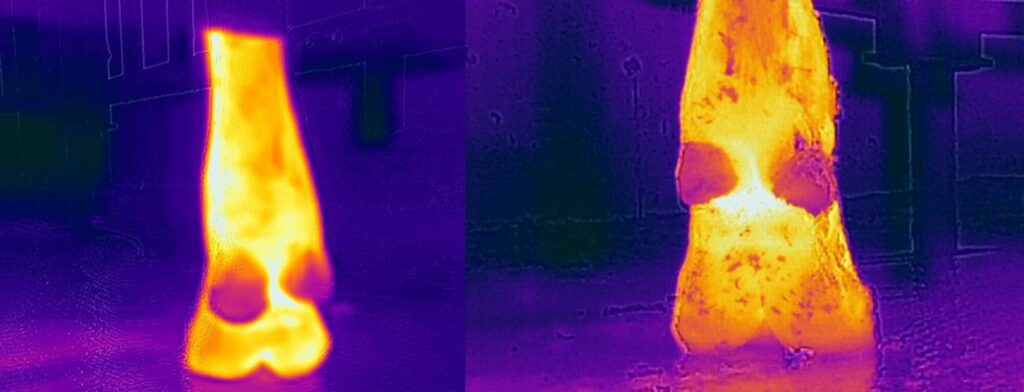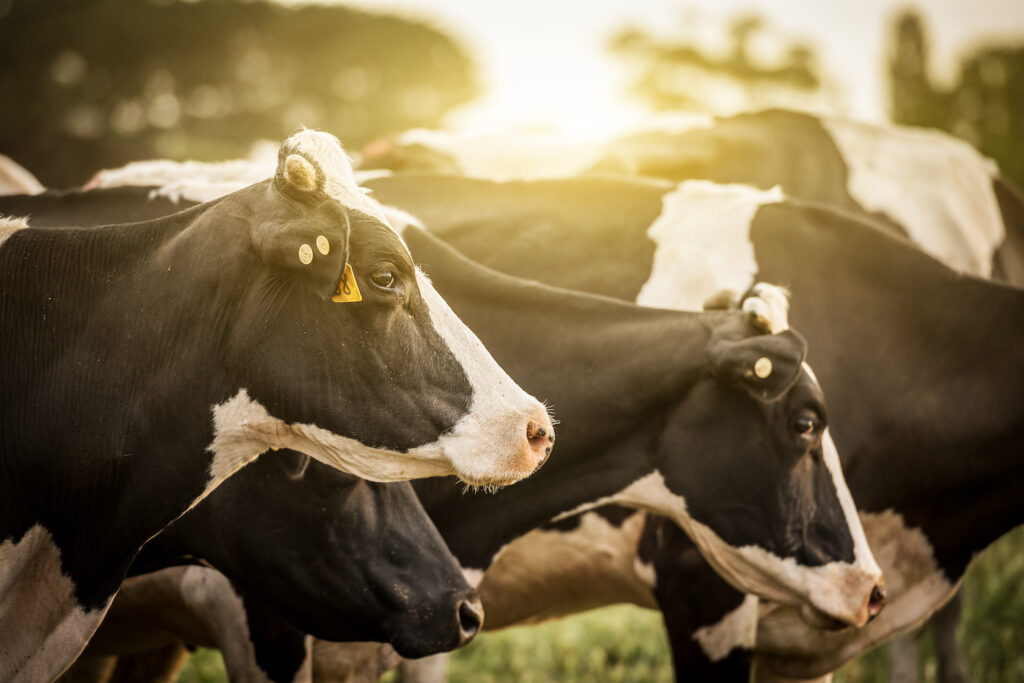Low-cost devices show promise in detecting lameness in dairy cattle
21st September 2022
A recent study led by the Royal Veterinary College (RVC) has revealed that low-cost thermal imaging devices could be as effective in detecting lameness in dairy cattle as diagnostics up to 50 times more expensive.
The minimal difference in effectiveness between low cost and expensive options could lead to more farmers, vets and hoof trimmers using affordable devices as an additional aid in lameness diagnosis.
Lameness is a widespread issue in the UK dairy industry with 20-25% of cattle affected across the country. Such high prevalence of lameness nationwide costs the industry approximately £53.5 million each year.
The results of this study could therefore have positive implications for farmers and the dairy industry by promoting early lameness diagnosis. This has high potential to reduce economic costs associated with the condition and increase the welfare of cattle on farms.
The study was led by Aidan Coe, an undergraduate veterinary student at RVC, and Dr Nicola Blackie, a senior lecturer in Production Animal Science at RVC. The researchers compared thermal images of 83 cows’ hind feet, taken with both high and low-cost devices.
Subsequent analysis identified very little difference in the performance and quality of the devices, suggesting that low-cost thermal imaging devices are a cost-effective solution to aid early lameness diagnosis. In the current study, these were just 2% of the cost of the more expensive devices.
“There is a possibility that low-cost infrared thermal imaging devices could be used as an objective, cost-effective method of assessing the lameness of the national herd, which may prove a useful adjunct to the current lameness detection methods,” Aidan Coe said.

(Left) Thermogram from the low cost device. (Right) Thermogram from the high cost device.
The results of the study suggest that low-cost thermal imaging devices are a worthwhile investment for farmers, vets, and hoof trimmers due to their effectiveness in detecting lameness in cattle. While high-cost devices have been used in the past for lameness diagnosis in cattle, their high price tag of up to £20,000, plus their fragility, have previously limited their use in a farm setting.
Dr Nicola Blackie, supervisor on the study and senior lecturer at RVC, commented: “This project has the potential to make early detection of lameness in cattle accessible to more of the farming population, with great economic and welfare benefits. By demonstrating the almost equal effectiveness of lower-cost thermal imaging devices to that of more expensive equivalents, this study helps make this technology available to much more of the farming population.”
The Royal Veterinary College is the largest and oldest veterinary schools in the UK. Dr Blackie concluded: “At the RVC we are proud to be able to support the research of all of our students no matter the stage of study they are at. It is the work and dedication of researchers like Aidan that lead to significant progress within the veterinary and farming industries.”
To read the full study, visit: https://www.mdpi.com/2306-7381/9/8/414

